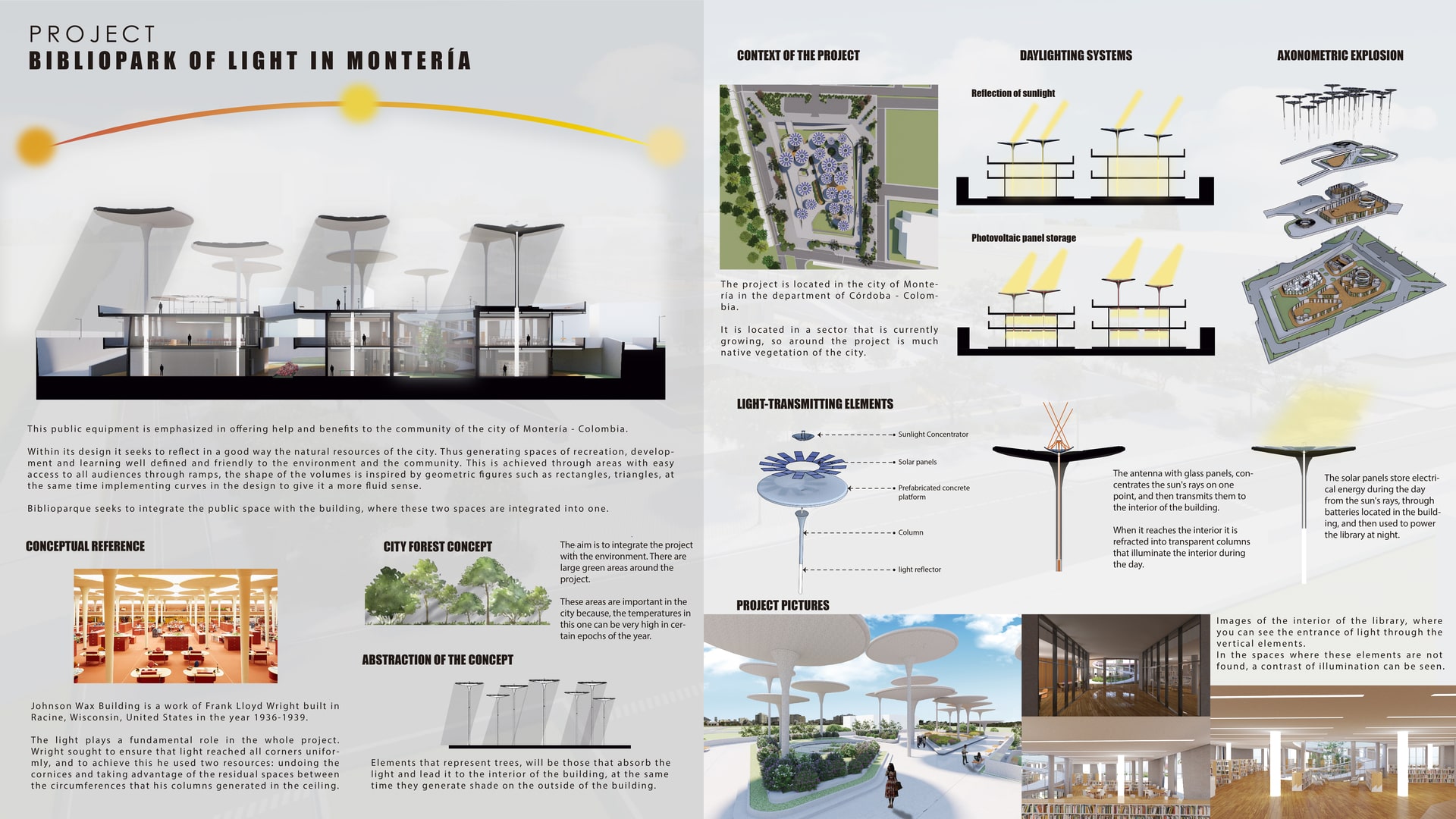Project Description
Bibliopark of Light in Monteria The bibliopark is the combination of a park and a library, the fundamental axis of the construction of a centrality based on the education and satisfaction of the social needs, besides contributing a worthy habitat for all the visitors and users of this type of public equipment. This project is proposed as a sustainable building, which offers library services, cafeteria, multiple rooms, auditorium, in addition to seeking the integration of outdoor public spaces with the interior. For circulation throughout the project has implemented the use of ramps that connect all levels of the project to provide accessibility for all people who need to make use of space. As for the bioclimatic of the project, it goes down one level below the ground level, to generate a microclimate in the lower part that allows to mitigate the high temperatures that can be reached in the city, in addition the interaction of natural elements as vertical gardens, zones of vegetation inside the project allows an integration between the green space and the social zones where the transition so abrupt between these spaces is not perceived. In the upper part of the project is a park where people can walk freely and by means of a curved ramp that passes through all the levels of the building, it is possible to access all the spaces of the library park. In these upper deck spaces are the elements that generate shade and transmit sunlight to the interior of the building, generating an abstract forest that combines the transition of sunlight by means of light-refracting columns, and elements that allow it to be transformed into electrical energy to be used for lighting at night, which would reduce the use of electrical energy from the local networks. In order to allow air circulation inside the building, different circular openings are planned on the roof, which allows a constant circulation of cold air inside the building and the exit of hot air to the outside. In addition, these openings provide a large entry of sunlight that further reinforces the natural lighting of the project. Light entry elements This element is made up of different parts whose function is to transmit sunlight directly to the interior of the building, and by means of photovoltaic cells transform the solar energy into electrical energy to be used in the entire project. The pieces that make them up are structural columns, light-refracting columns that are elements capable of refracting the light inside the building, solar panels, and an antenna covered with reflective material. There are two ways in which sunlight can be used with these elements. The first method uses an antenna-shaped device at the top of the element which will receive the light rays and reflect them to a point that will concentrate them on a tube which is covered from the top to where the cover begins with a reflective material. which will allow the light to reach the lowest part of the building. Then the tube will be made of a transparent material that will allow the light to expand through the spaces where the luminescent columns are present. This will provide the space with more light than it receives without these elements and will give a greater width to the space. For the second method, solar panels are used, which take the light and convert it into solar electricity. When the panel receives sunlight, it converts it into direct current (DC) electricity, which is transported by cables to the base of the vertical element where there is an inverter that converts the direct current into alternating current, which is used to power the entire project. This energy is also stored by different batteries, so that at night it is used to illuminate the building and thus reduce the use of electricity that is supplied by public services.
